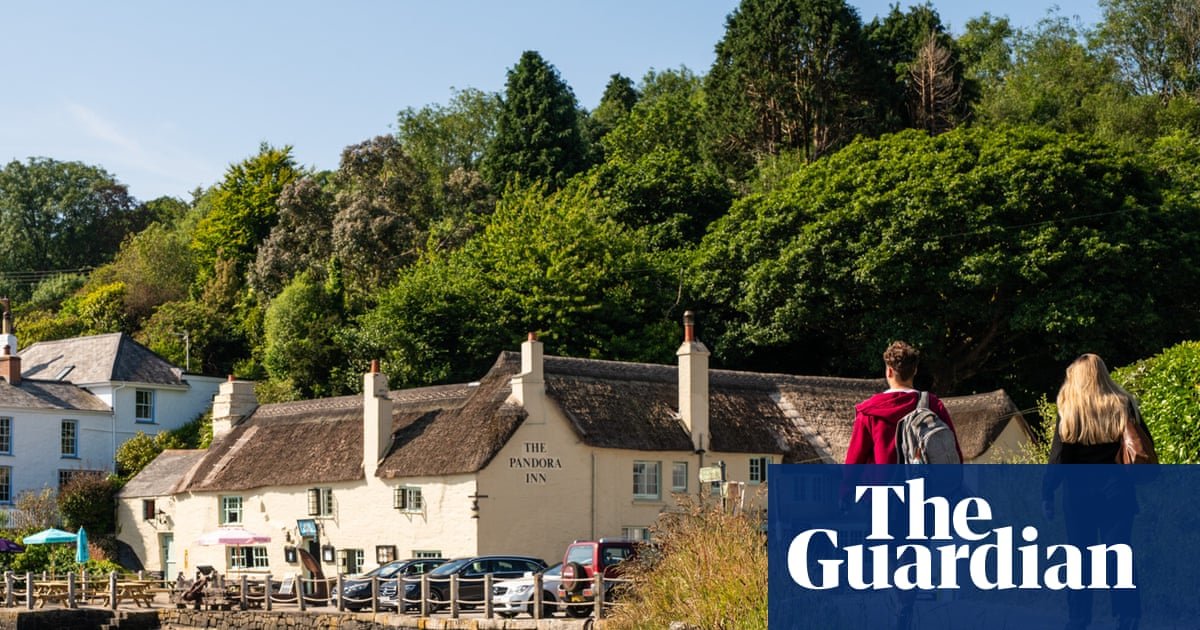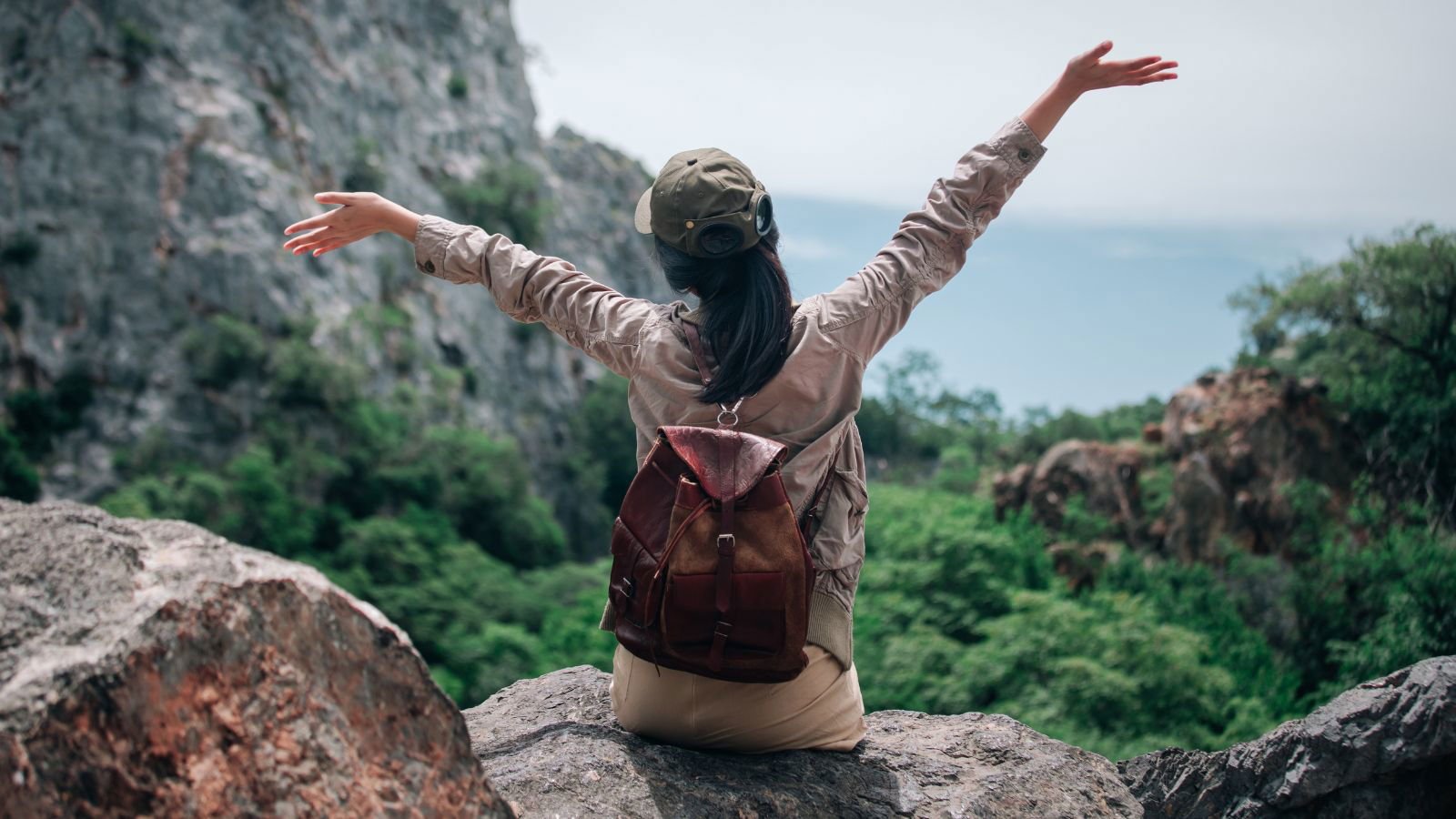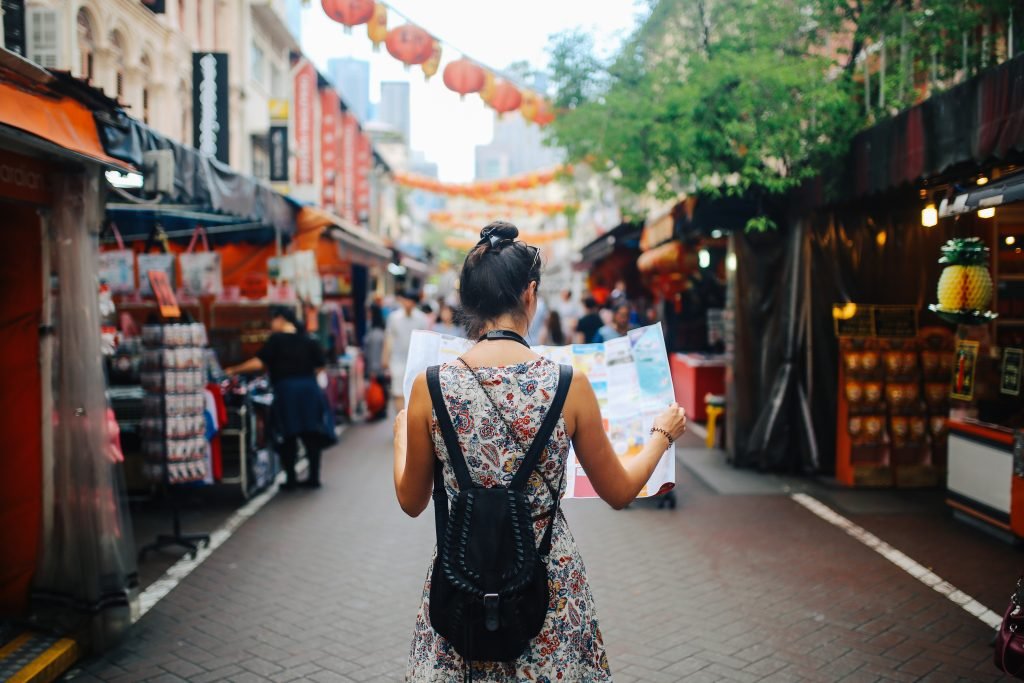Solo Travellers
‘Sipping a pint while trout splashed in the river on a perfect summer’s day’: readers’ favourite UK waterside pubs | Travel

During last month’s heatwave I was lucky to cool off at an outside table at the Mayfly on the River Test near Stockbridge. Sipping a refreshing pint while leaping trout splashed in the water gave the scene a feel of the perfect English summer day. There’s a nearby weir, and forests and fields stretch into the distance. The pub has friendly staff, plenty of tables and a river-based menu including “brown butter chalk stream trout fillet” (£20.50) plus pub classics. If the setting inspired you as it did me, there are vineyards nearby to explore and the timber-framed village of Wherwell is just a stroll along the towpath.
Joe
Profile
Readers’ tips: send a tip for a chance to win a £200 voucher for a Coolstays break
Show
Guardian Travel readers’ tips
Every week we ask our readers for recommendations from their travels. A selection of tips will be featured online and may appear in print. To enter the latest competition visit the readers’ tips homepage
–
A celebration of Hull’s maritime history
The Minerva stands at the entrance to Hull’s trendy marina and has fantastic views over the Humber estuary. It opened in 1829 and is decorated with pictures, photos, maps and shields that celebrate Hull’s maritime history. “The snug” can only fit two people and is claimed to be the smallest pub room in the UK. The staff are brilliant and there’s an ever-changing selection of guest ales.
Rob
Warrington’s most serene pub
The Ferry Tavern is a family-run pub that stands proud on its own island between the River Mersey and the Sankey to St Helen’s canal. Although it feels worlds away from nearby built-up areas, it’s easily accessible, and best approached on foot or by bike, sitting right on the Trans-Pennine trail. The beer garden stretches along the riverbank, and nursing a pint of ale on a summer evening while looking out across this tranquil section of the Mersey with all its birdlife is serenity. The 300-year-old tavern is all cosy low ceilings and wooden beams, perfection for the Sunday pub quiz, while Foodie Fridays attracts locals to themed cuisine from Mexican to Greek. The rest of the week, however, hot food is not served.
Matt Lunt
A grand pub on the Grand Union canal in Warwickshire
The 18th-century Blue Lias is a lovely family-run pub on the peaceful banks of the Grand Union canal in the heart of the verdant Warwickshire countryside. It beckoned me towards its outside beer garden as I strolled along the canal with its vibrant flower baskets hanging outside and the welcoming sound of friendly chatter from fellow walkers sipping ale. The pub is named after the clay that’s quarried in the area and offers a beautiful, calm ambience on a summer’s day with many people arriving on foot or by narrowboat.
Gina
Oozing history in Cornwall
The Pandora Inn, on the banks of Restronguet creek between Truro and Falmouth, is a fantastic place to watch the world go by. Parts of the pub date back to the 13th century and the flagstone floors and thatched roof ooze history. But for me, the main attraction is the pontoon reaching out into the creek – the perfect place to watch wildlife and the regular clientele arriving by smallboat and kayak. Plus, the cheesy chips are to die for!
Matt Croxall
Just wading birds for company, Cumbria
One of the best beer gardens and all-round views in the country must be at the Bay Horse on the outskirts of Ulverston. The pub-hotel sits where the Ulverston canal meets the tidal estuary of the River Leven – an idyllic spot between the vast otherworldly expanses of Morecambe Bay and the soaring mountains of the Lake District. Being out of town, it’s often quiet with only wading birds and the odd train for company. Being just outside the national park means the prices are also more Cumbrian (cheap) than at tourist traps in the Lakes.
Michael
after newsletter promotion
A step ahead in north Devon
The Tarr Farm Inn in Exmoor is in a secluded valley right by Tarr Steps, an ancient clapper bridge across the River Barle. It’s a fantastic spot for a dog walk and a pint of local cider while the kids paddle in the stream. The inn dates from the 1600s and serves outstanding food (it was once chosen to provide the VIP catering for Glastonbury festival).
Jen
The herons of Cambridge know a good pub
The Granta overlooks the Mill Pond and Sheep’s Green by the River Cam, and, despite being less than half a mile from the city centre, has countryside pub vibes. During the summer, cows may wander freely on the other side of the pond – old grazing rights are still utilised on Cambridge’s commons. Moorhens, mute swans and herons are regular neighbours, the latter often statue-like at the water’s edge. The pub’s terrace offers a chance to relax with a drink while watching over this watering hole. There’s even the chance of a cameo in cobalt from a passing kingfisher: an alternative Cambridge blue.
Sharon Pinner
Watering hole by south London’s River Wandle
The William Morris at Merton Abbey Mills in Colliers Wood, south London, is a super-friendly pub next to the River Wandle. There is regular live music, lovely independent shops, and children can watch a watermill and learn about water energy. Although there is lots of traffic not too far way, the actual pub, named after the 19th-century textile designer, is a fab watering hole where you can almost forget about London. A short walk away is the National Trust’s Morden Hall Park – you could whet your appetite by going there first.
Asa
Winning tip: Aire of excitement in Leeds
Piglove by the River sits in the Leeds’ Climate Innovation District on the River Aire. It’s not just the name that enchants. Owned by two Venezuelans who say they are inspired by the UK’s craft beer tradition, Piglove offers small-batch beers brewed on site, rotating weekend street-food trucks, and a programme of tone-perfect events: quiz nights, spoken word, post-run cool-downs, pride marches, and jazz if you time it right. There’s a greengrocers, mismatched benches, and the sense that something slightly bonkers might happen at any moment. It’s walkable from the city centre, waiting for you to be seduced by the hum of Friday-night gatherings or the scent of pizza wafting over the sunlit water.
Eliza Ainley
Solo Travellers
Study: Millennials power APAC solo travel surge, digital channels lead the way

Solo travel is no longer a niche. With one in three APAC travellers planning a solo trip in the next 12 months, the trend has become a full-blown movement. Whether driven by a desire for self-discovery, a break from routine, or the simple freedom to go at one’s own pace, solo travellers are reshaping how brands think about engagement, content, and conversion.
Scoot and YouGov’s latest study, “Unpacking the solo travel trend,” explores the mindset of solo travellers across six APAC markets — Singapore, Malaysia, Indonesia, Philippines, Thailand, and Australia — and what it means for marketers eyeing this growing segment.
The study found that solo travel skews younger, with 45% of respondents aged 18 to 34. Women make up a higher share of solo travellers at 56%, compared to 44% for men. In Singapore, the trend is particularly strong among Millennials, who are turning to solo travel for flexibility, emotional reset, and the opportunity to prioritise mental wellbeing.
Don’t miss: Report: 95% of APAC travellers eager for AI
The top reasons for going solo include the freedom to explore without compromise (50%), personal growth (38%), and the need to escape daily life (35%). One in five travellers also said they travelled solo because they had no one to go with, suggesting an untapped opportunity for community-based travel experiences or group-style solo packages.
Digital channels drive solo travel planning
Digital platforms are central to the solo travel journey. For accommodation, travellers turn first to online travel agency websites, followed by hotel sites and reviews. Most flights are booked directly through airline websites or apps, while OTAs and social platforms play supporting roles.
Social media plays a key role in food and activity discovery. Travellers often consult TikTok and Instagram to plan where to eat and what to do. Family recommendations and online reviews also heavily influence decision-making, underscoring the need for brands to maintain consistent and trusted digital footprints.
The study notes that solo travellers prioritise flexibility, peace of mind, and convenience. Offerings such as all-in-one insurance, rebooking flexibility, and integrated travel bundles help reduce planning friction. For travel marketers, this means going beyond awareness-building to remove practical barriers at each touchpoint.
Presence across channels is no longer optional. From OTA listings and hotel partners to influencer content and review platforms, brands need to be present where consumers already are. The solo travel journey is omnichannel and non-linear. Brands that show up with clarity, utility, and relevance are more likely to drive action.
With solo travel on the rise, brands that recognise the solo traveller as a distinct and valuable audience, rather than a secondary segment, will be better placed to capture loyalty, spend, and share of mind.
“While the findings do not represent the end to group and family travel, the way we travel expresses our individuality and allows for self-discovery. Scoot’s white paper sheds light on the behaviour, motivations, preferences and expectations of an emerging segment of travellers today,” said Agatha Yap, director of marketing, communications and loyalty, Scoot.
“With an extensive network especially in the Asia-Pacific, Scoot is excited to be able to play a role in enabling access to some of the most sought-after and yet-to-be discovered destinations, empowering more travellers, whether solo or group, to explore the world with greater confidence and enthusiasm,” she added.
Adding further context to the evolving travel landscape, Booking.com’s 2025” Global AI sentiment report”, unveiled at its Trust Summit in Singapore, highlighted the growing enthusiasm for AI among APAC travellers. The report, based on insights from over 37,000 consumers globally, found that 95% of APAC travellers are excited about AI’s expanding role in travel, with 82% already familiar with the technology and 93% planning to use AI tools in their future trip planning.
The report also points to a shift in trust, with travellers increasingly valuing AI assistants over traditional influencers or peer recommendations. Moreover, there is a strong interest in AI-driven solutions that support responsible travel such as avoiding crowded tourist spots and encouraging experiences that benefit local communities. This growing integration of AI complements broader travel trends focused on personalisation, convenience, and meaningful experiences, and signals new opportunities for travel brands to engage the tech-savvy solo traveller segment.
Accelerate your brand’s growth with AI-first strategies, emerging tech and data-driven experiences. Join 500+ marketing leaders at Digital Marketing Asia 2025 Singapore on 24–25 September to uncover transformative trends, real-world wins and powerful ideas for 2025 and beyond.
Related articles:
Muslim travel index shifts: Malaysia reclaims crown as Indonesia slips
Study: 90% of APAC luxury travellers book with wellness in mind
Malaysia Airlines invites travellers to indulge in ‘Time for premium escapades’
Solo Travellers
The unlikely destination that solo Aussie travellers can’t get enough of

Aussies are increasingly prioritising trips with the person closest to them, themselves! With solo travel becoming increasingly popular, Scoot, the low-cost arm of Singapore Airlines, has today released findings that shed light on the rising popularity of solo travel across the Asia-Pacific region.
The findings show that there’s one destination, travellers can’t get enough of.
Conducted in partnership with YouGov, the research surveyed over 5,000 people – including 1,017 Australians – to explore the motivations, behaviours and attitudes shaping this growing travel trend.
The insights, captured in Scoot’s inaugural white paper, delve into the demographics of solo travellers, their planning habits, destination choices, and the cultural nuances that influence their journeys—offering a timely look at the modern mindset of the self-guided explorer.
Top Five solo travel wishlist destinations (global) for Australians:
1. Australia (45 per cent) (domestic travel)
2. UK (15 per cent)
3. US (14 per cent)
4. New Zealand (13 per cent)
5. Canada (10 per cent)
With so many Australians boasting family connections in the likes of UK, New Zealand and US, it is also no surprise that visiting friends and family surged to the top of the list as a driver for solo travellers.
To reach all of these destinations, solo travellers continue to prioritise affordable air travel options, with almost two-thirds (62 per cent) opting for economy class and two in five (40 per cent) considering affordability as a top factor when choosing an airline. This underscores the importance of value for those navigating the world on their own.
Solo Travel Emerges as Mainstream Travel Choice
Once seen as a niche pursuit, solo travel in Australia has increasingly become a common lifestyle choice. Eight in 10 (81 per cent) of solo travellers in Australia went on solo trips in the past year, with more than half (54 per cent) undertaking two or more trips. The interest in solo travel is expected to continue, with close to nine in 10 (87 per cent) Australians planning to take a solo trip in the next 12 months.
A large proportion of respondents from Australia (83 per cent) are likely to recommend solo vacations to others. This growing trend is closely tied to broader lifestyle shifts, from increased demands at work and home to a rising emphasis on personal well-being. A total of 56 per cent of solo travellers from Australia cite freedom and flexibility to plan their own itineraries as their primary motivation, while 45 per cent view solo travel as an opportunity to take a break and focus on themselves. Notably, another 44 per cent value the opportunity to pursue activities and hobbies they enjoy.
In Australia, solo getaways have become a modern ritual for self-care and self-discovery. Scoot enables these journeys by connecting Australia to popular Southeast Asian destinations such as Indonesia and Thailand – renowned for their wellness and personal growth experiences. Research also shows solo travellers continue to favour Asia for its affordability and rich experiences.
Scoot’s findings dovetail the rise in mindfulness, health and wellness, highlighting how travel, especially solo travel has evolved from simply being a leisure activity to one that travellers growingly seek for reflection and self-discovery.
“For many Australians, it’s no longer just about ticking off bucket list destinations, it’s about slowing down, reconnecting with yourself, and embracing the destination. This white paper highlights the mindset shift towards solo travel. Australians are embracing solo trips not out of necessity, but out of choice. Whilst we still have amazing journeys with friends and family, solo travel sparks a sense of lone adventure where you can go your own way and choose a unique journey bespoke to you.” Adam Kelly, General Manager, Scoot Australia.
Whether they are setting off for wellness, wanderlust, or a bit of both, Scoot’s extensive network to over 70 destinations, products, and affordable fares allow travellers to explore the world confidently,” he added.
Research and planning are key priorities for solo travellers
While independence may be one of the core appeals, solo travellers in Australia today are far from impulsive. In fact, they are highly intentional in their approach with planning for their trips. Aside from booking flights, the main priorities for half or more of these travellers include accommodation selection (63 per cent), budget management (53 per cent), and safety considerations (45 per cent). They rely heavily on online travel agencies (32 per cent), hotel and airline websites or apps (54 per cent), and recommendations from family and friends (34 per cent) to help them make informed decisions with flight and accommodation bookings.
Japan, Singapore, and Thailand top Asia-Pacific travel wishlist
The white paper also revealed a trend for easy-to-reach APAC hotspots, with the likes of Japan, Singapore and Thailand named as some of the top solo locations for Australians to visit within the Asia-Pacific region.
Top 10 Solo Travel wishlist destinations in APAC for Australians (excluding Australia/domestic travel):
- New Zealand
- Japan
- Singapore
- Thailand
- China
- Vietnam
- Malaysia
- Indonesia
- Philippines
- South Korea / India (tie)
These choices indicate a desire for personal connections, vibrant cultures and nature escapes, reflective of the most popular types of solo trips: reconnecting with loved ones, visiting friends and family (55 per cent) beach holidays (39 per cent), culture and history (39 per cent) city breaks (34 per cent), and visting countryside and rural areas (34 per cent). This echoes the cultural shift towards experience-led holidays, where travel is seen as a form of informal education and cultural immersion, especially for those choosing to explore the world solo in pursuit of personal enrichment.
Overall, the white paper reveals a strong preference for destinations in UK, US and New Zealand as the top global destinations that Australian travellers would like to head to on a solo trip in the next 12 months.
Solo Travellers
Solo travel gaining momentum among Malaysians, survey shows

Once a niche pursuit, solo travel among Malaysians has become more popular, especially among younger travellers. Six out of 10 respondents took solo trips in the past year, with almost a third (27%) of them having embarked on three or more such trips in the same period, according to a new YouGov survey.
Millennials are at the forefront of this shift, making up 38% of current and aspiring solo travellers.
The research, commissioned by low-cost carrier Scoot, involved over 5,000 respondents across five countries within the Asia-Pacific region – Malaysia, Singapore, Thailand, Indonesia and Australia – offering a window into the mindset of today’s independent explorer.
Some 86% of Malaysian respondents said they would recommend solo travel to others: a growing trend tied to broader lifestyle shifts, from increased demands at work and home to a rising emphasis on personal well-being.
Meanwhile, 56% of solo travellers cited freedom and flexibility to plan their own itineraries as their primary motivation; while 53% viewed solo travel as an opportunity to take a break and focus on themselves.
Notably, 49% of the respondents said they value the independence of exploring new places at their own pace.
Respondents from Malaysia were also the biggest group to cite solo travel as a catalyst for pursuing activities or hobbies they personally enjoy (47%, compared to the regional average of 43%).
This reflects a growing desire among Malaysians to use travel as a means to reconnect with their interests away from routine or group expectations.
What do Malaysians look for?
The findings also show that solo travellers are highly intentional in their approach: an overwhelming majority (95%) engaged in some form of planning for their trips.
Aside from flight bookings, main priorities for more than half of these travellers include budget management (56%), accommodation (52%), and safety considerations (51%).
They relied heavily on online travel agencies, hotel websites, and online review platforms to help them make informed decisions about their flight and accommodation bookings. For food and activity recommendations, they relied on social media.
The survey further reveals a strong preference for Asia-Pacific destinations among Malaysian respondents, with nine in 10 planning trips within the region in the next 12 months.
Malaysia ranks as their top travel location, with 21% preferring to travel solely within the country, and 71% open to domestic and international trips.
Thailand (25%), Japan (23%), and Indonesia (22%) emerged as the top three international travel destinations in the year ahead.
These choices indicate a desire for vibrant cultures, nature and seaside escapes, reflective of the most popular types of solo trips: cultural and historical experiences (46%), city breaks (43%), beach getaways (42%), and nature holidays (41%).
To reach these destinations, respondents from Malaysia continue to prioritise affordable air travel options, with 70% opting for economy class and 28% choosing low-cost carriers – underscoring the importance of value as a key driver for those navigating the world on their own.
-

 Brand Stories2 weeks ago
Brand Stories2 weeks agoBloom Hotels: A Modern Vision of Hospitality Redefining Travel
-

 Brand Stories1 week ago
Brand Stories1 week agoCheQin.ai sets a new standard for hotel booking with its AI capabilities: empowering travellers to bargain, choose the best, and book with clarity.
-

 Destinations & Things To Do2 weeks ago
Destinations & Things To Do2 weeks agoUntouched Destinations: Stunning Hidden Gems You Must Visit
-

 Destinations & Things To Do1 week ago
Destinations & Things To Do1 week agoThis Hidden Beach in India Glows at Night-But Only in One Secret Season
-

 AI in Travel2 weeks ago
AI in Travel2 weeks agoAI Travel Revolution: Must-Have Guide to the Best Experience
-

 Brand Stories1 month ago
Brand Stories1 month agoVoice AI Startup ElevenLabs Plans to Add Hubs Around the World
-

 Brand Stories3 weeks ago
Brand Stories3 weeks agoHow Elon Musk’s rogue Grok chatbot became a cautionary AI tale
-

 Asia Travel Pulse1 month ago
Asia Travel Pulse1 month agoLooking For Adventure In Asia? Here Are 7 Epic Destinations You Need To Experience At Least Once – Zee News
-

 AI in Travel1 month ago
AI in Travel1 month ago‘Will AI take my job?’ A trip to a Beijing fortune-telling bar to see what lies ahead | China
-

 Brand Stories2 weeks ago
Brand Stories2 weeks agoContactless Hospitality: Why Remote Management Technology Is Key to Seamless Guest Experiences

You must be logged in to post a comment Login